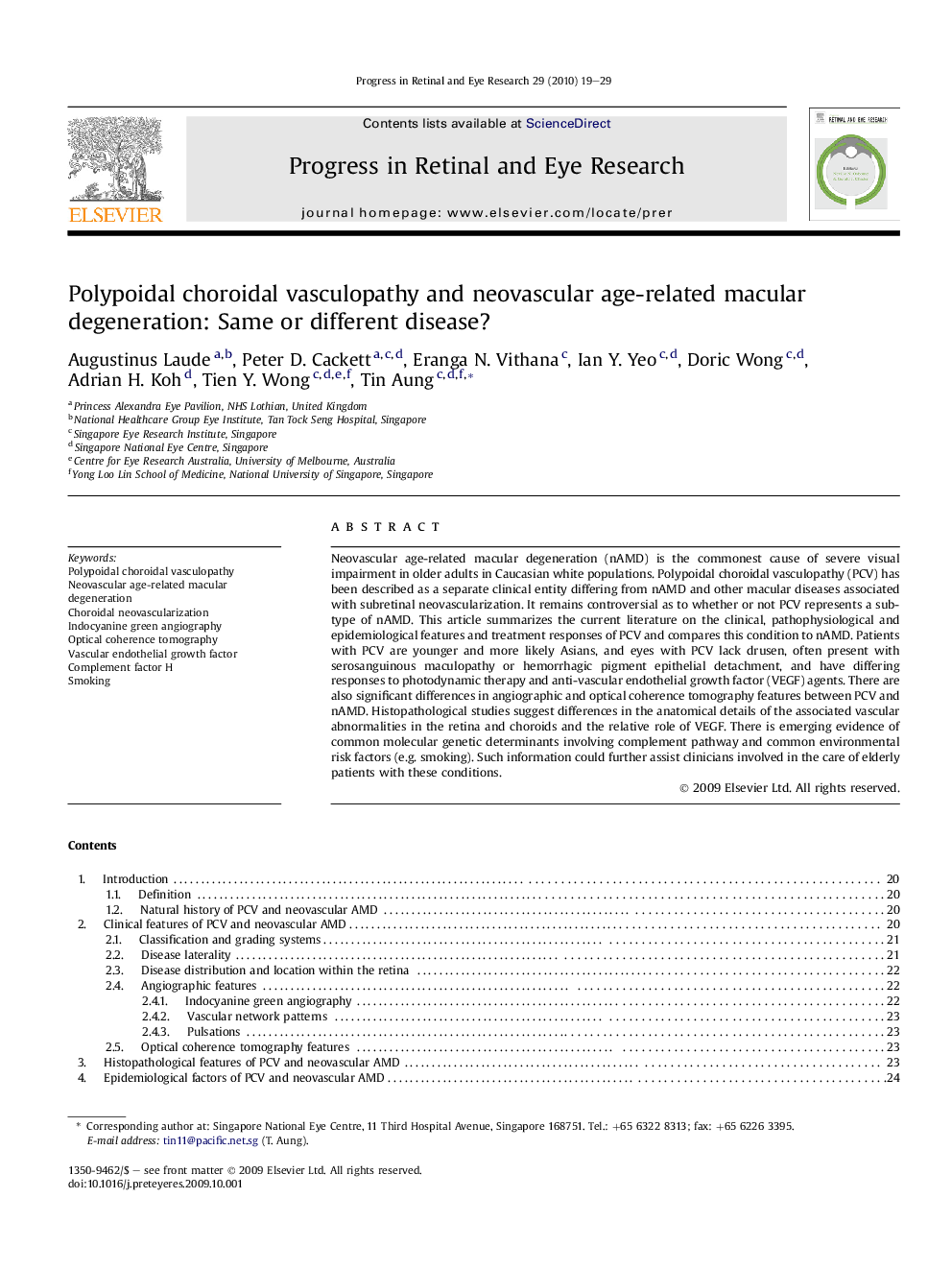| Article ID | Journal | Published Year | Pages | File Type |
|---|---|---|---|---|
| 4032065 | Progress in Retinal and Eye Research | 2010 | 11 Pages |
Neovascular age-related macular degeneration (nAMD) is the commonest cause of severe visual impairment in older adults in Caucasian white populations. Polypoidal choroidal vasculopathy (PCV) has been described as a separate clinical entity differing from nAMD and other macular diseases associated with subretinal neovascularization. It remains controversial as to whether or not PCV represents a sub-type of nAMD. This article summarizes the current literature on the clinical, pathophysiological and epidemiological features and treatment responses of PCV and compares this condition to nAMD. Patients with PCV are younger and more likely Asians, and eyes with PCV lack drusen, often present with serosanguinous maculopathy or hemorrhagic pigment epithelial detachment, and have differing responses to photodynamic therapy and anti-vascular endothelial growth factor (VEGF) agents. There are also significant differences in angiographic and optical coherence tomography features between PCV and nAMD. Histopathological studies suggest differences in the anatomical details of the associated vascular abnormalities in the retina and choroids and the relative role of VEGF. There is emerging evidence of common molecular genetic determinants involving complement pathway and common environmental risk factors (e.g. smoking). Such information could further assist clinicians involved in the care of elderly patients with these conditions.
